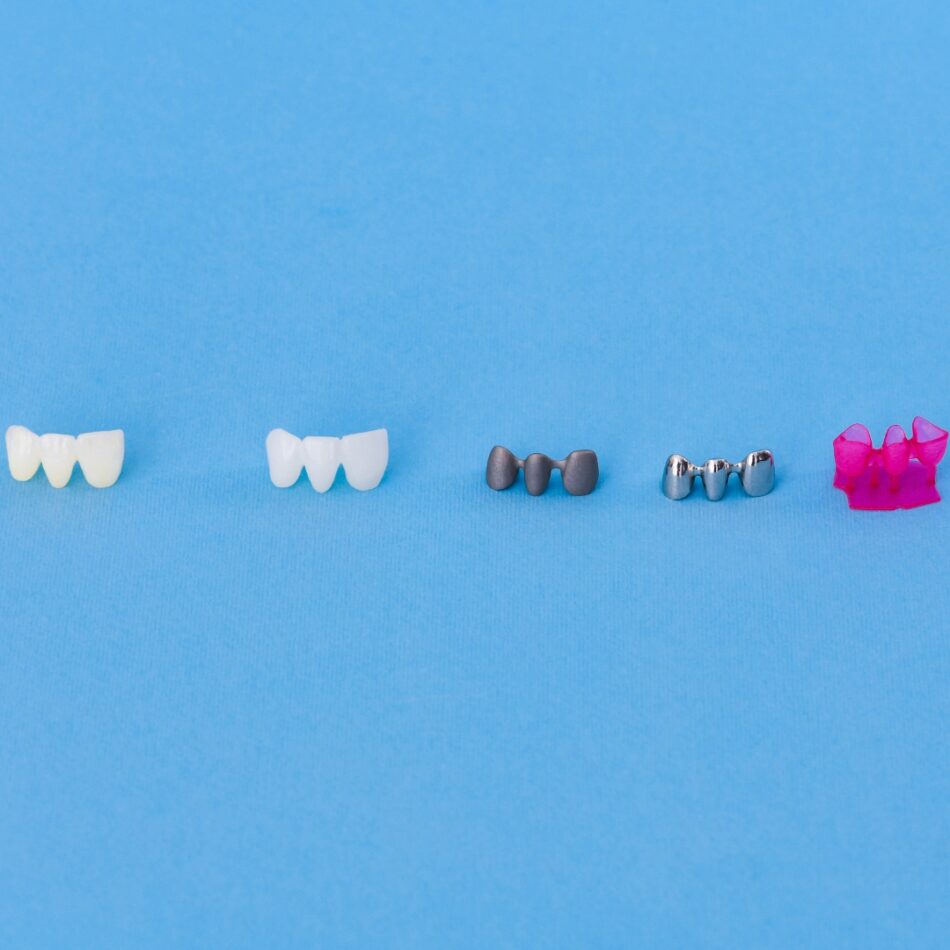Dental crowns are a popular solution for restoring damaged or weakened teeth, offering both cosmetic and functional benefits. With several materials available, including porcelain, metal, and ceramic, choosing the right type of crown depends on your individual needs, lifestyle, and budget. Understanding the types of dental crowns and cost associated with each can help you make an informed decision that suits your oral health and financial situation.
Understanding Dental Crowns
Dental crowns are custom-made caps placed over a tooth to restore its shape, strength, and appearance. They’re commonly used after root canal treatments, large fillings, or to cover cracked, broken, or worn-down teeth. Crowns also play a role in dental bridges and implants.
The key difference among crowns lies in the material used. Each type—porcelain, metal, and ceramic—offers unique advantages and considerations in terms of durability, aesthetics, and dental crown cost.
Porcelain Crowns
Porcelain crowns are known for their natural appearance and are often used for front teeth where aesthetics are a priority. They closely mimic the colour and translucency of natural teeth, making them ideal for patients concerned about visible dental work.
Pros:
- Excellent aesthetic appeal
- Biocompatible, reducing the risk of allergic reactions
- Suitable for people with metal allergies
Cons:
- Less durable than metal-based crowns
- More prone to chipping or cracking under heavy pressure
- Can wear down opposing teeth over time
Cost in Australia: On average, porcelain crowns cost between $1,200 and $2,000 per tooth, depending on the complexity and clinic location.
Metal Crowns
Metal crowns are made from alloys that include gold, palladium, nickel, or chromium. They are known for their strength and longevity, making them a preferred option for molars that endure significant biting force.
Pros:
- Extremely durable and long-lasting
- Less tooth structure needs to be removed
- Resistant to wear and corrosion
Cons:
- Metallic appearance makes them unsuitable for visible front teeth
- Some patients may be allergic to certain metals
Cost in Australia: The dental crown cost for metal crowns can range from $1,000 to $2,500, with gold crowns often sitting at the higher end of the scale due to the value of the material.
Ceramic Crowns
Ceramic crowns are similar to porcelain in terms of appearance but are made entirely of ceramic materials without any metal. These crowns are highly aesthetic and suitable for people with metal sensitivities.
Pros:
- Excellent cosmetic match with natural teeth
- Biocompatible and metal-free
- Suitable for both front and back teeth
Cons:
- May not be as durable as metal crowns
- Can be more expensive depending on the specific ceramic used
Cost in Australia: Ceramic crowns typically cost between $1,300 and $2,100, though prices can vary based on the dentist’s experience and the materials used.
Types of Dental Crowns and Cost Comparison
Here’s a quick overview of the types of dental crowns and cost associated with each:
| Crown Type | Key Benefit | Ideal For | Average Cost (AUD) |
|---|---|---|---|
| Porcelain | Aesthetics | Front teeth | $1,200 – $2,000 |
| Metal | Durability | Molars | $1,000 – $2,500 |
| Ceramic | Natural look | Front & back teeth | $1,300 – $2,100 |
It’s also worth noting that some clinics offer porcelain-fused-to-metal (PFM) crowns, which combine the strength of metal with the appearance of porcelain. These crowns provide a middle-ground option in terms of both aesthetics and durability, usually costing around $1,200 to $2,000.
Factors Influencing Dental Crown Cost
Several variables affect the total dental crown cost in Australia:
- Location: Dental practices in major cities like Sydney or Melbourne may charge more than rural areas.
- Dentist’s expertise: More experienced dentists may charge higher fees for their services.
- Technology used: Clinics with advanced CAD/CAM technology might offer same-day crowns, which can be more expensive.
- Additional procedures: If your tooth requires additional preparation (e.g. root canal therapy or core build-up), your overall cost will increase.
Some private health insurance plans in Australia cover a portion of the crown cost under ‘major dental,’ but it’s essential to check your policy for specific limits and waiting periods.
In summary, when deciding between porcelain, metal, or ceramic crowns, it’s important to weigh both aesthetic preferences and functional needs against your budget. Porcelain and ceramic crowns offer superior cosmetic results, especially for front teeth, while metal crowns provide unmatched durability for back molars. Each option comes with a different price point, so understanding the types of dental crowns and cost is key to making the best choice for your oral health. Consulting with your dentist will help determine the most suitable crown material based on your bite, tooth location, and lifestyle. Investing in a high-quality crown now can save you from future dental issues—and costs—down the track.






